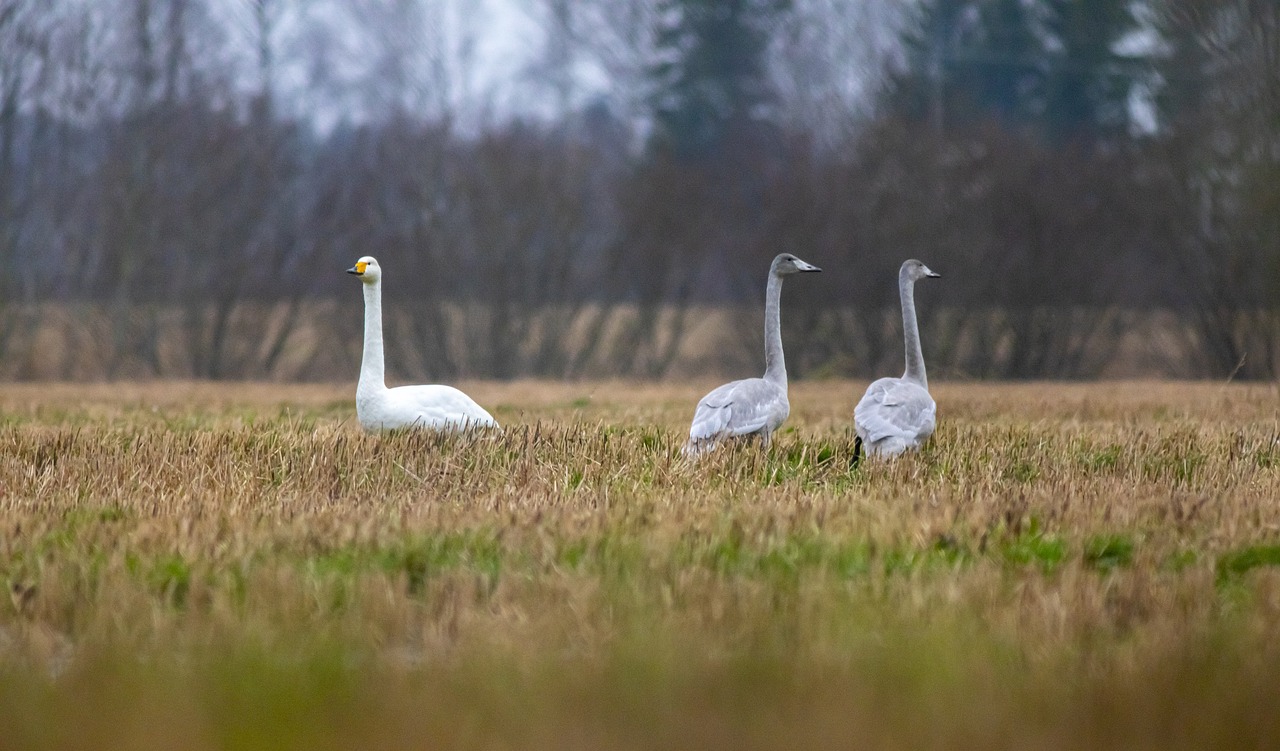The Whooper Swan (Cygnus cygnus) is a large, elegant bird known for its distinctive call and striking appearance. Here’s a detailed overview of the Whooper Swan:
Description
- Size: The Whooper Swan is a large bird, with a body length of 140-165 centimeters (55-65 inches) and a wingspan of 205-275 centimeters (81-108 inches). Adults typically weigh between 7 and 14 kilograms (15-31 pounds).
- Appearance:
- Plumage: Pure white plumage covers the entire body.
- Beak: The bill is black with a large, distinctive yellow patch at the base, which differs from the more extensive orange-yellow bill of the similar Bewick’s Swan.
- Neck: Long and graceful, often held straight.
- Legs and Feet: Black legs and feet.
Habitat
- Distribution: The Whooper Swan breeds in northern Europe and Asia, particularly in Iceland, Scandinavia, and Siberia. During the winter, they migrate to more temperate regions in Europe and East Asia, including the British Isles, parts of western and southern Europe, and coastal China and Japan.
- Preferred Environment: They inhabit freshwater lakes, rivers, and wetlands with ample vegetation during the breeding season. In winter, they can be found in estuaries, coastal marshes, and flooded fields.
Behavior and Ecology
- Diet: Whooper Swans are primarily herbivorous, feeding on aquatic plants, grasses, and grains. They may also eat small invertebrates found in the water.
- Foraging: They forage by dipping their heads underwater (dabbling) and grazing on land.
- Vocalization: Their call is a loud, trumpet-like sound, often described as “whooping,” which gives them their name. These calls are used for communication, especially during migration and courtship.
Reproduction
- Breeding Season: The breeding season occurs from May to August.
- Nesting: Whooper Swans build large nests from plant material, usually situated on small islands or floating vegetation in lakes and wetlands. The nests are often reused each year.
- Eggs and Incubation: Females lay 4-7 eggs, which are incubated for about 35-41 days. Both parents share incubation duties, although the female does most of the work.
- Chicks: The cygnets are precocial and can swim and feed themselves shortly after hatching. They fledge at around 75-90 days old but remain with their parents for their first winter.
Conservation Status
- Threats: Whooper Swans face threats from habitat loss due to wetland drainage and agricultural expansion. Collisions with power lines and illegal hunting also pose risks.
- Conservation Efforts: Conservation efforts include protecting wetland habitats, implementing measures to reduce collisions with power lines, and international agreements to protect migratory routes and wintering grounds.
Interesting Facts
- Migration: Whooper Swans undertake long migrations, traveling up to 1,000 kilometers (620 miles) between their breeding and wintering grounds. They fly in a characteristic V-formation, which helps reduce air resistance.
- Symbolism: In many cultures, swans are symbols of grace, beauty, and fidelity, as they often form long-term monogamous pairs.
Observing Whooper Swans
- Best Places: To observe Whooper Swans, visit their breeding grounds in northern Europe and Asia during the summer, or their wintering sites in temperate regions. In the UK, sites like Slimbridge Wetland Centre and Martin Mere are popular for winter observations.
- Watching Tips: Early morning and late afternoon are ideal times for birdwatching. Use binoculars to observe their behavior and plumage details without disturbing them.
The Whooper Swan (Cygnus cygnus) is a magnificent bird with its striking white plumage, distinctive call, and impressive migratory habits. Observing these birds in their natural habitats is a rewarding experience for bird enthusiasts and nature lovers alike.
Visited 849 times, 6 visit(s) today
Views: 1283
Subscribe to the newsletter:
